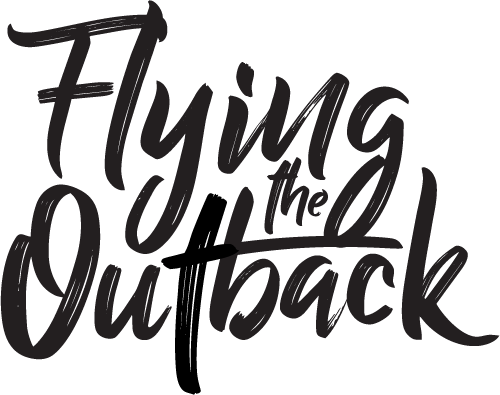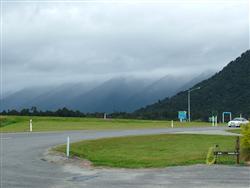
Best to watch this kind of weather from on the ground
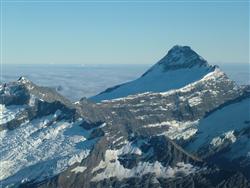
1. Preparation is the key
This is the case with to any flying but is especially important in the mountains. Let’s break it up into to stages because time spent on preparation will mean a safe and enjoyable experience rather than a rushed or extremely uncomfortable experience, especially if the unexpected comes along.
2. First up, obtain the current weather.
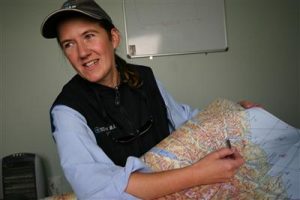
This can be started days before by conventional ways such as television, radio and the newspaper. New Zealand, being an island country, can have predictable weather in the Southern Alps-if there is a front coming, stay on the ground! Or with a large Anti-Cyclone over the South Island bringing stable weather, it is time to go flying!
3. Personal Preparation.
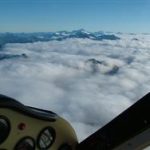 This is common sense but like most of us at one time or another this vital part can be skipped. Personal preparation means– adequate clothing, sturdy shoes or boots, warm jacket, sunhat, sunscreen, insect repellent, a warm hat, food and water. These items are a minimum. Doing this can be made very simple by having a dedicated bag, like your gym bag, that simply lives in the boot of your car and goes straight into the aircraft, you are using on the day, as part of your preflight.
This is common sense but like most of us at one time or another this vital part can be skipped. Personal preparation means– adequate clothing, sturdy shoes or boots, warm jacket, sunhat, sunscreen, insect repellent, a warm hat, food and water. These items are a minimum. Doing this can be made very simple by having a dedicated bag, like your gym bag, that simply lives in the boot of your car and goes straight into the aircraft, you are using on the day, as part of your preflight.
4. Aircraft preparation
This is equally as important. Do a thorough pre-flight, (I like to do one the night before if the plane is in a secure hangar. This avoids last minute surprises and time pressures). Is the aircraft suitable for the planned flight, and the current and forecast weather conditions? Take sufficient fuel, but not to excess as performance may be hindered and remember your fuel card in case of an unexpected detour. Are there fuel pumps away from your planned route? If not what is your back-up plan for fuel? Remember your documents. Take your maps, both aviation and more detailed national park maps that name geographical features.
5. Survival bag
Be familiar with its contents. It needs to contain enough items to survive in the bush for a few days and most importantly it needs to be in the plane. Make your own up or there are some adequate ones available in stores-but check their contents before purchase! Also take your first aid pack and ELB and no matter how short the planned flight is, take the tie downs! In NZ there are many interesting stories how planes were blown over and this can even happen on a hot calm day without warming. The insurance company will not be interested in paying you if the plane was not tied down.
6. Are you really prepared?
Rely on the local knowledge, these girls and guys have been flying in the area far longer than you and they enjoy sharing what they know with you. They will be happy to flight follow for you, so you have the added security that someone who knows the area and weather pattern is looking out for you. There are many areas around our Mountains where VHF reception is unreliable so a flight follower is an excellent back up.
Ok, so you are set to go??
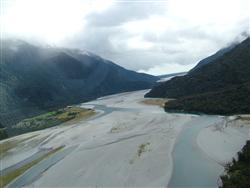
Haast Pass
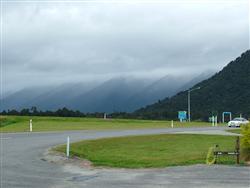
7. Look at the weather
How are the current conditions comparing to the forecast conditions? And most importantly, look at the sky. What is the wind showing? Is this the same as the forecast wind? If not, how will this affect your flight? Do you have to change your plans accordingly?
Ask the locals to point out Lenticulars-indicating Wave. This is created by high-speed wind flowing perpendicular to the mountains. Lenticulars are associated with severe turbulence and are accompanied by Rotors, which are angry looking whispy clouds on the lee of a mountain. Rotors are not always visible. If the Lenticulars are visible, stay out of the mountains and seriously consider staying on the ground.
If the clouds are light and skies are clear, the mountains will be inviting you. If you have no Valley Flying experience then seek a lesson from a recommended local Instructor. The wind will be different in each valley system, they will teach you how to read wind, detect and avoid up and down drafts. Indicators of wind come from the tussocks, ponds, speed of the clouds and their shadows, smoke, aircraft drift, aircraft nose attitude and groundspeed vs. airspeed. You will also learn which side of the valley to fly, how to transit mountain passes and what the local procedures are. Ask about how to improve your flying and decision-making skills, the more skills you can learn the more experience you will gain.
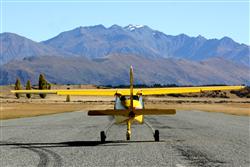
Take-off Wanaka airstrip
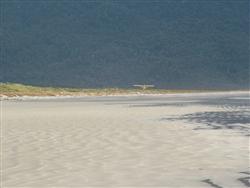
Landing looks OK. Enough runway to take off?
8. Take-off
How much runway did you use? Is this more or less than you expected? Judging by this, will you be able to safely get airborne from any airstrip you may be planning to land on?
Learn how to:
- check out strips
- find wind without windsocks
- assess which is the safe technique to land in regards to wind strength, direction and windshear.
9. Once in the air
- Aircraft performance – is the plane performing as you expected? If performance is not adequate, can you continue the planned flight?
- Changing conditions, such as rapidly reducing visibility, causes disorientation, which in turn leads to attitude and airspeed problems.
- Disorientation not only occurs with cloud but also with effects of sun and shadow in the mountains and snow capped scenery with a white clouded-out horizon. (If you have ever been in a white-out on the ski field, you will know what this means).
- Escape option – always have a way out. Don’t enter a valley you can’t either out-climb, or turn out of.
10. Safety is situational awareness.
Do utilize local knowledge. Do seek training; it enhances your flying skills and improves your safety. Please prepare properly, look at the facts, stay current in handling the aircraft, monitoring outside conditions, being prepared, thinking ahead.
Most important thing is this: Take nothing for granted. Don’t get into a mindset of seeing what you want to see. Constantly evaluate the flight, weather conditions and make sure you are following the correct valleys, rivers and ridgelines. If unsure, don’t just push on…re evaluate and be safe.
by Ruth Presland
Further Information:
Mountain Flying New Zealand www.mountainflyingnewzealand.com
Phone: +64 (0) 3 443 4005
Mobile: +64 (0) 21 483 262
Email: zoom@u-flywanaka.co.nz

